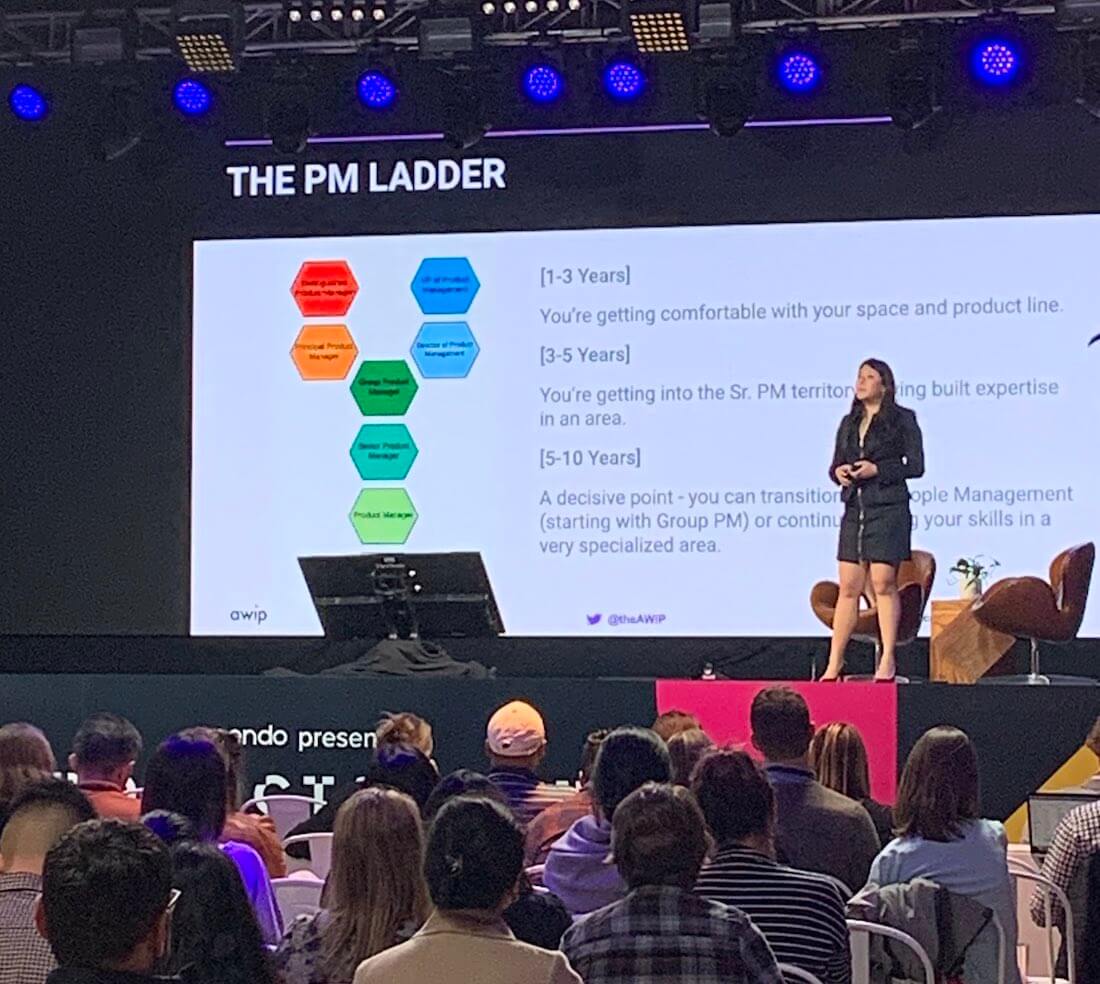Nancy Wang knows a little bit about climbing the product management ladder. Her own career has spanned a diverse range of industries, from government to non-profits, and now, to tech. She began her career working in data systems for the United States government and has led product development at companies like Rubrik and Google. Currently, she’s the head of product and engineering at AWS (Amazon Web Services) Backup. In addition, Nancy is the founder and CEO of Advancing Women in Product, an NGO dedicated to bringing about gender equality in the tech and PM fields through mentorship, education, and networking.

At last month’s ProductCraft Conference: San Francisco, Nancy gave an inspiring and informative talk entitled “PM Overdrive: Growing Your Career in Product.” Drawing on experiences from her own very successful career, she shared advice, action items, and suggestions for standing out at every rung of the PM ladder.
The PM career timeline
At the beginning of her session, Nancy shared a breakdown of the typical stages of the product management career path. She noted that every PM’s journey is different, and an individual’s own trajectory might vary significantly from the so-called norm. However, the PM career path generally looks like this:
- Years 1-3: This is junior PM and PM territory. At this stage, you’re earning the ropes and building an understanding of your product line.
- Years 3-5: Now we’re approaching the senior PM level. PMs in this category have built expertise around their particular product.
- Years 5-10: This is where things get tricky. You have an important decision to make. Do you want to become a very specialized, highly-skilled PM, or do you want to start managing a team?
Two ways to “scale yourself”
Depending on your decision, you’re either preparing to manage multiple product lines, or a team of direct reports. In either case, you’ll need to scale your skillset.
Multiple product lines
If you plan to go the “expert PM” route, you’ll need to identify your specific strengths and begin taking on additional product lines. Basically, you’ll need to increase the scope of your role.
Identify your strengths
What areas of product management are your strong suits, and which are you especially passionate about? Is it user research? Customer journey mapping? Product analytics? Do you love diving deep and solving technical problems, or does building industry expertise appeal more to you? This is the time to identify and play to your strengths.
Pick related products
Taking on multiple product lines is a big career step, but also a huge challenge. Ease the transition and set yourself up for success by choosing related product lines. This will allow you to leverage those strengths you’ve identified.
Managing a team
If your goal is to take on a managerial role, you should build expertise and skills in three specific areas: people, process, and technology.
People
Nancy shared that at Amazon, they tailor interviews with the goal of determining whether or not a candidate is truly a product leader. And to be a leader, you need to actually lead a team. To eventually move into a GM or C-level role, you’ll start by managing a small group of PMs. Like all skills, management needs to be learned. Make use of company resources and outside training to become the most successful manager you can be. Listen to your direct reports, help them develop, and drive toward measurable results.
Process
A product leader has influence within the organization. They have the power to make decisions. In fact, they are the primary decisionmakers for all things related to the product. However, they do so within the confines of agreed-upon processes. That means they back up their decisions with data, communicate them properly, and involve all relevant stakeholders.
Technology
What tools are your go-to’s? How involved are you in the tech stack? Are you an expert in the platforms your team uses to perform their day-to-day tasks? A manager cannot lead effectively without having at least a working understanding of the team’s stack and where each piece of technology fits into the PM workload.
Becoming a GM
If you’re a group PM or a director or VP of product, your end goal might be the GM (general manager). Nancy shared that at Amazon, GMs own all aspects of the business, including product and engineering. They’re also responsible for product P&L. In addition to having excellent managerial skills and extensive product expertise, GMs need to know their financials and their contribution to the bottom line. If you aspire to become a GM, seek out opportunities to better your understanding of financial statements and go-to-market strategies.
Nancy’s PM career advice
No matter where you are in your product career, Nancy said that it helps to think big. Demonstrate an entrepreneurial spirit and a bias toward action. To prepare yourself for a managerial role, start by mentoring other PMs. Seek opportunities for networking and education. Set the foundations now for a long and successful career in product.


